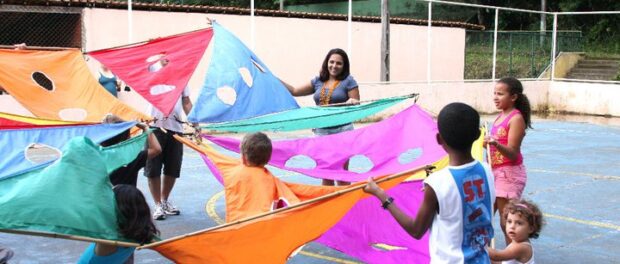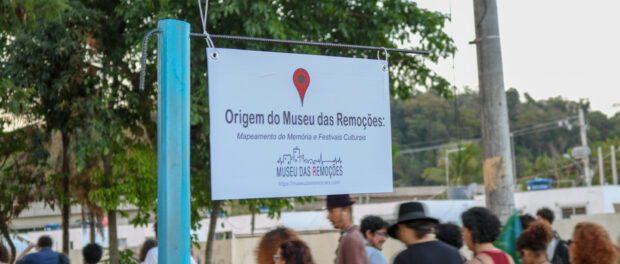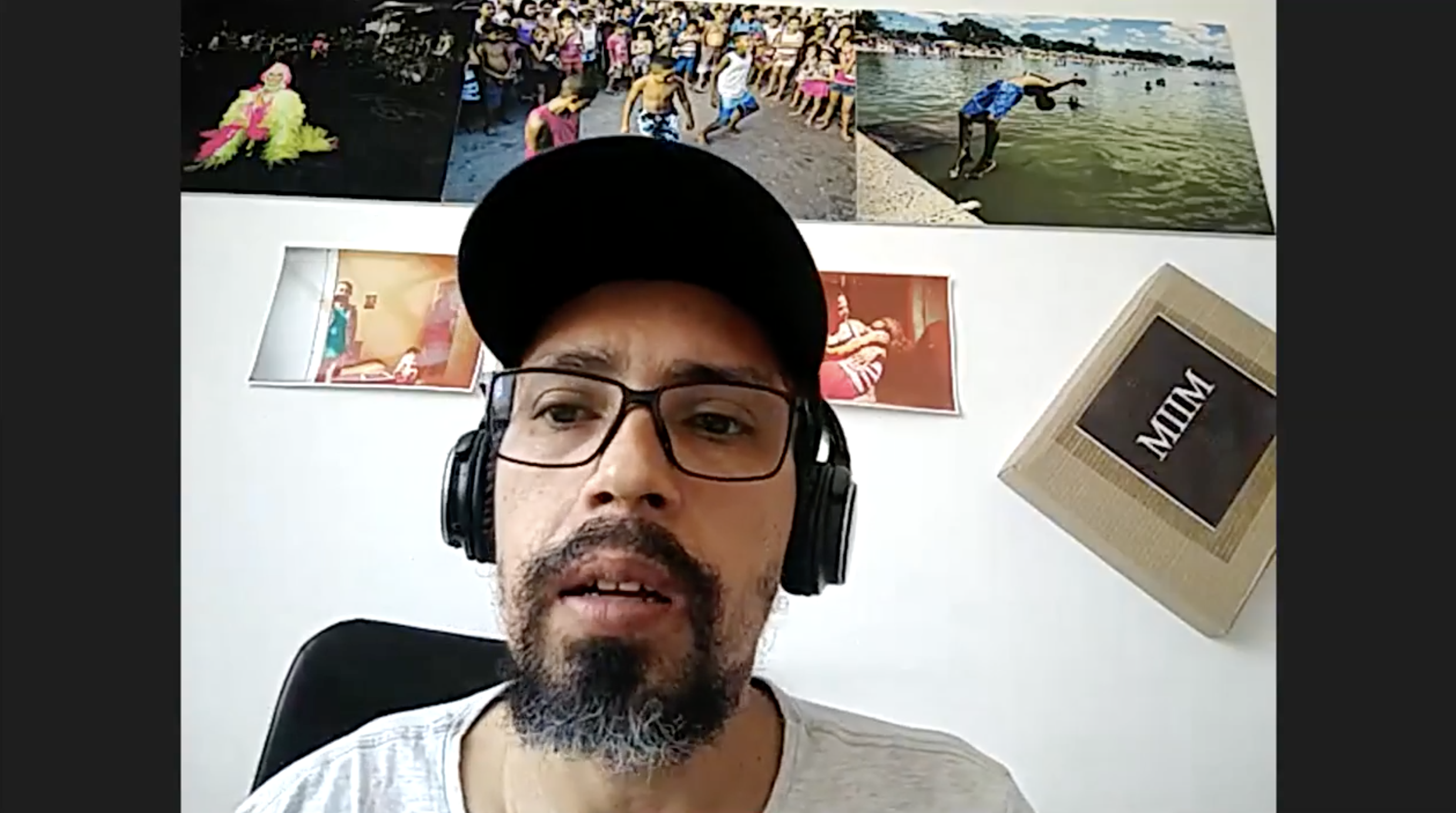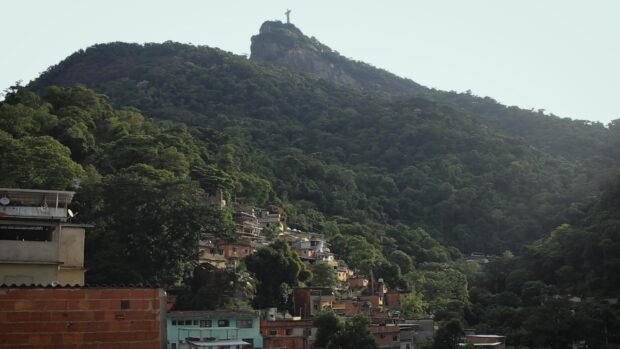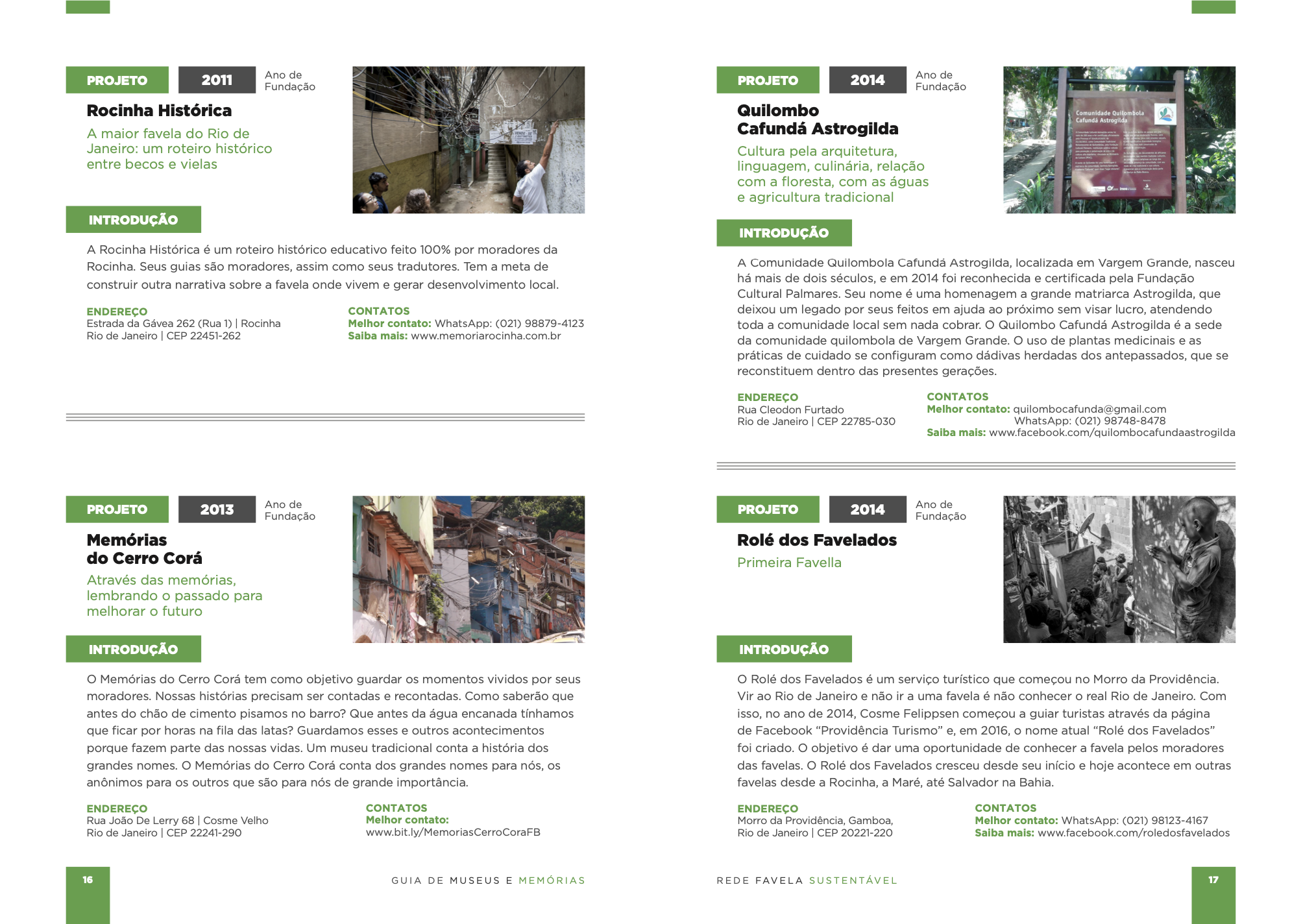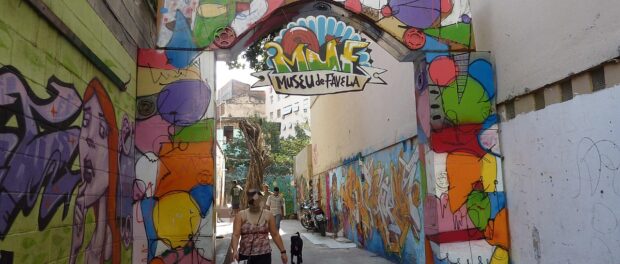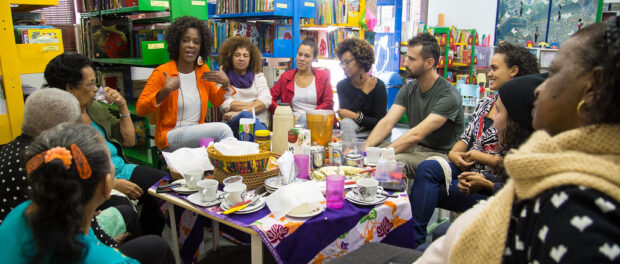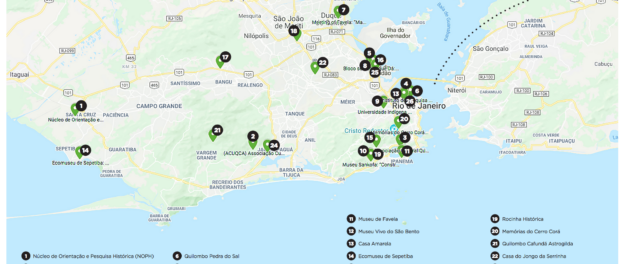
 This is our most recent article in a series created in partnership with the Behner Stiefel Center for Brazilian Studies at San Diego State University, to produce articles on human rights and socio-environmental justice in the favelas for RioOnWatch.
This is our most recent article in a series created in partnership with the Behner Stiefel Center for Brazilian Studies at San Diego State University, to produce articles on human rights and socio-environmental justice in the favelas for RioOnWatch.
At the Sustainable Favela Network (SFN)*’s third annual full-network meet-up, its Memory and Culture Working Group launched a unique roadmap to the cultural richness of the city’s favelas, peripheries, and quilombos (formally recognized ancestral lands of descendants of enslaved Africans): the Guide to Museums and Memories of the Sustainable Favela Network. The Guide highlights histories that have been forcibly repressed and is a reference for anyone wanting to veer away from conservative museology and its one-dimensional evocations of the past, or superficial and stigmatizing views of favelas.
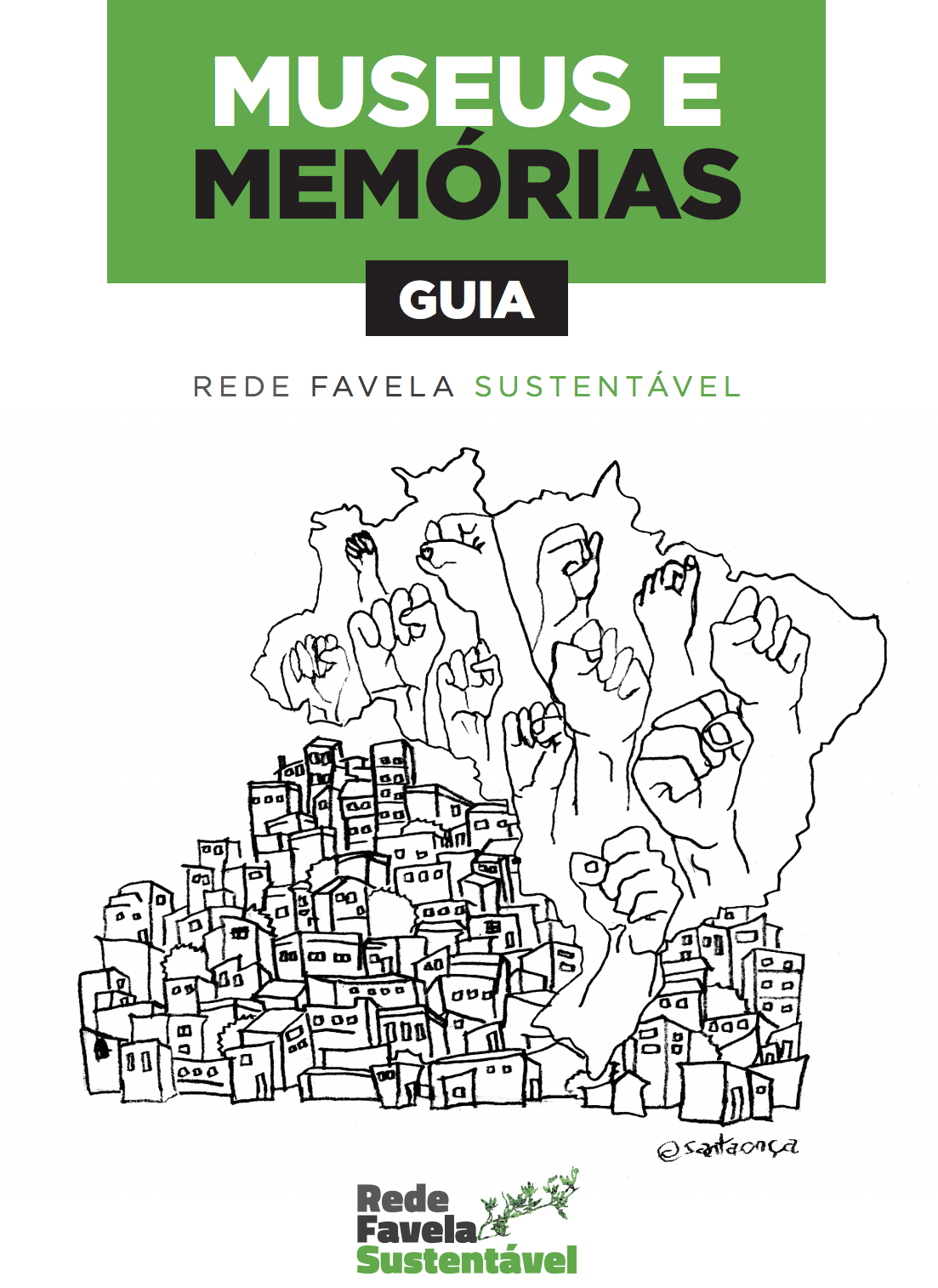 “This Guide gives us visibility when we are generally marginalized. It shows the knowledge of the favela to others. It is important that each favela resident tell her own story,” said Maria da Penha Macena of Vila Autódromo‘s Evictions Museum, who also wrote the Guide’s preface. It reads, “Much has already been lost in the memories and histories of communities, favelas, ghettos, and urban peripheries. Brazil did not take the care and attention necessary to fully preserve the memory of its native, black, and poor populations, who always collaborated in the construction and development of this country.”
“This Guide gives us visibility when we are generally marginalized. It shows the knowledge of the favela to others. It is important that each favela resident tell her own story,” said Maria da Penha Macena of Vila Autódromo‘s Evictions Museum, who also wrote the Guide’s preface. It reads, “Much has already been lost in the memories and histories of communities, favelas, ghettos, and urban peripheries. Brazil did not take the care and attention necessary to fully preserve the memory of its native, black, and poor populations, who always collaborated in the construction and development of this country.”
On top of Penha’s introduction, the Guide includes reflections collectively written by the Working Group, on topics such as “Why do favela museums exist?” and “How do community museums generate belonging and identity?” In the center is a map of the memory-preserving initiatives, which can also be accessed on Google Maps here. Finally, each initiative has an entry of its own, containing a brief introduction of the museum/initiative, contact information, an address, and the year in which the initiative was founded. Due to the historical nature of the guidebook, initiatives are organized in chronological order, by year of foundation.
A year-long research effort, which began as a discussion inside the Working Group, identified 26 community museums, research centers, art galleries, and heritage sites from across Greater Rio de Janeiro. They range from quilombos that were established centuries ago and formalized in the past decades, to a mobile museum that was established in 2019, and include, but are not limited to, projects that participate in the SFN. While some of the initiatives have physical sites, others take the form of tours or carnival parades. What the projects have in common, according to the Guide’s jointly-written texts, is that they aim for “universal access to the entertainment and education offered by museums” and they tell history from a local perspective, “leaving clear that we will not accept the imposition of a history and memory that are not ours.”
The initiatives weave together elements of local art, stories of residents, methods of harmonious coexistence with nature, and political resistance, as explained in one essay, “reaffirming territoriality in the face of socio-spatial injustice, globalization’s trend of homogeneity, and the ephemeral liquidity of post-modernity.” To them, the initiatives in the Guide display the “liberating function of memory.” Reflecting on the challenges of “lack of publicity, and, consequently, lack of visitors in general,” the Guide serves as an invitation for visits, dialogue, and support.
The Guide to Museums and Memories of the Sustainable Favela Network includes cultural projects whose central axes are linked to black history, such as Quilombo Pedra do Sal, one of the first urban quilombos in Brazil; indigenous resistance, such as the Aldeia Maracanã Indigenous University; and more contemporary urban identities such as the Graffiti Museum and Meeting of Favela, both focused on street art. At the same time, the museums represent the diversity of people who have passed through their territories over the years and made them home, valuing their “autonomy, collective construction, the involvement of residents who are the experts and in fact belong to those territories,” write the Guide’s authors.
The November 7 launch event, which was facilitated by Catalytic Communities* Executive Director Theresa Williamson, included the participation of Maria da Penha of the Evictions Museum, José Renato Pimenta of the Historic Orientation and Research Nucleus of Santa Cruz (NOPH), Luiz Antônio de Oliveira of the Maré Museum, Francisco Valdean of the Maré Traveling Museum of Images (MIIM), and Tereza Onã of the Maré Center for Memory and Identity (NUMIM). They reflected on the philosophies driving their initiatives and the broader goals behind collectively creating the Guide.
“Memory is an important instrument for this transformation from the grassroots that we so desire,” said Oliveira. By creating a museum devoted to local culture and history, he said, “you break these stigmas that the majority of society attributed to favela residents, over decades, in the city of Rio de Janeiro. It is an extremely political instrument.”
How Community Museums Generate Belonging and Identity
Many initiatives in the Guide to Museums and Memories of the Sustainable Favela Network work closely with residents of favelas and urban peripheries to document their daily lives, such as the Memories of Cerro Corá initiative, the Sankofa Museum in Rocinha, and the Favela Museum, an open-air museum that strives to enhance the individual and collective memory of Pavão-Pavãozinho and Cantagalo residents. Francisco Valdean, who displays such images through his traveling museum, MIIM, said that this type of work shows “that it is possible… to lead people to look at the pictures, and to imagine favelas, beyond their already-established images.” Breaking stigma and enhancing understanding is a core principal of many of the community museums.
Many initiatives in the Guide have identities linked to preservation of the surrounding area. The Quilombo do Camorim Cultural Association carries out historical and environmental walks and archeological digs, the Quilombo do Sacopã Cultural Association is known for its “preservation of the forest and biodiversity,” the Guide notes, while at the Quilombo Cafundá Astrogilda “the use of medicinal plants and care practices are configured as blessings inherited from the ancestors.” The Sepetiba Ecomuseum and the Caceribú Ecomuseum are specifically focused on their local natural environments, as is the São Bento Living Museum, the first ecomuseum in Greater Rio’s Baixada Fluminense.
Other museums are linked to local—and deeply historical—musical traditions, like the Casa do Jongo da Serrinha and the House of Bumba Meu Boi in Movement Museum in Bangu. Some focus more on visual arts, such as Casa Amarela in Rio’s original favela, Providência. And many of the museums tell stories of local political struggles, such as the Evictions Museum and the Horto Museum, “an instrument of resistance in the cause of traditional families of Horto that today suffer with real estate speculation, in spite of two centuries of history,” the Guide writes.
Maria da Penha, at the launch event, said that the Evictions Museum was conceived beginning in 2015, as Vila Autódromo suffered a bitter and drawn-out eviction process. “It was born with two proposals. [First was] to remain in the community, to be a tool in the struggle against evictions, to show that we want to stay in this space, that we love this space, that we have the right to this space, that we were being violated. And [second was] to preserve our memory, of those who left and of those who stayed in this community. And to tell our story.”
Penha concluded, “Memory cannot be evicted!”
The Importance of Favela Museums for the City
The Guide writes that “favela museums, more than a place of memory and of exhibiting local archives and collections, can and should be a place of research and production of knowledge generated from a point of view of the oppressed, from an insurgent point of view, from a decolonial point of view, from where the true search for change emanates.”
This change-seeking perspective can be seen in museums in the Guide such as the New Blacks Institute for Research and Memory, which was founded in 2005 and “promotes reflection about slavery and its scars for the principles of racial equality in Brazil.”
Many cultural projects in the Guide innovate by calling into question traditional notions of what constitutes a museum. NOPH is a community museum in Santa Cruz, a large peripheral district in Rio de Janeiro’s far West Zone. Though it was originally founded to “value the material heritage of Santa Cruz, mainly the buildings from the colonial, Jesuit, and imperial period,” said José Renato Pimenta, at the launch, it evolved with “the museological shift toward immaterial heritage, at the end of the 1980s and beginning of the 1990s.” In the 1990s, “the museum changed to reflect the territory of the neighborhood and the population that inhabits it. That is, this directly puts the favela inside NOPH, because 70% of the neighborhood of Santa Cruz is composed of favelas.”
MIIM, the “youngest child in the catalogue,” said Valdean, is a traveling museum based out of a shoebox. In the box, Valdean stores images in monocles, photo negatives, and pictures of daily life in the favelas of Maré. He shows them to people on the street and at neighborhood events such as barbecues. “The inventive part of this museum comes from this contact with people,” he said. Their questions of “Is this a museum? is a question of extreme relevance for museology and art.”
Valdean said that when he presented MIIM at a school in Maré’s Vila do Pinheiro, “a student got up and said ‘My grandmother is a museum!’ and I asked, ‘Why is your grandmother a museum?’ and he said, ‘Because my grandmother is full of stories and she puts her photographs in a box too!’”
The Guide shows that just as a shoebox can serve as a museum, so too can a walking tour, such as Rolé dos Favelados and Rocinha Histórica, and a carnival parade, such as Maré’s Se Benze Que Dá.
Community museums, said Oliveira of the Maré Museum, “have lots to dialogue about with so-called traditional museums.”
The Maré Museum’s long-term exhibition examines different phases in the life of favela residents such as migration, work, resistance, and festivities. “Memory is at the same time enchanting and sensitive, but also powerful. It can be brutal also. At some necessary moments,” said Oliveira. Above all, “memory is social. Memory of life is made by people, and not by furniture and walls.”
Further commenting on the importance of exchange, he said, “We can’t close ourselves into a circuit of community museums. We have to work with pedagogy.”
This dialogue between traditional and favela museums is already occurring, as can be seen by exchanges and awards such as the Favela Museum, another initiative in the Guide, receiving two honors in 2009 from the Brazilian Institute of Museums: “for its concept of a Living Museum and for its distinct way of thinking and creating a museum.”
Community Museums After the Pandemic
“What we envision for community museums after the pandemic is that the physical museums can stay on their feet with their doors open,” writes the Guide. “Many of them, unfortunately, may not open again because of lack of resources and visitors.”
During the pandemic, managers of favela museums have continued to spread their work through participating in digital events and projects like the compilation of the Guide itself. The MIIM, for example, organized an online collective exhibition by photographers from Maré, while the Maré Museum is offering virtual tours for those who contribute to their fundraising campaign.
But the museums’ experiences are not the same digitally, and so their organizers are preparing for a time when it is safe to circulate in the city again. The Guide launch event concluded with the words of Tereza Onã of NUMIM, which is part of NGO Redes da Maré. NUMIM helped create Maré’s Open-Air Museum, the official opening of which was delayed by the pandemic. The museum is “a circuit that begins in Parque União and ends in Vila do Pinheiro,” two favelas within the Maré complex, said Onã, and consists of tiles bearing the words of residents. It was created through “speaking with residents. Really, it is a group of memories of residents, from every age group.”
Onã is also a member of NUMIM’s Griots of Maré, a group of black female storytellers. “As a black woman in the diaspora, orality is a foundation for our population,” she said. While Maré is full of history that comprises its identity, it is also true that “Maré is the future.”
The hopeful sentiment was echoed by other participants at the launch event and in one of the final texts of the Guide: “With dedication and work together with our communities, we hope that favela museums can receive more cultural projects, so all can have access to what only the favela can show.”
In order for the museums to continue to flourish, said Oliveira at the launch, “we believe it is important to be in these collective spaces. To try to create networks. To try to create pathways to join forces on actions that are so important.”
“Favela museums, resist!” reads the subtitle of the jointly-written traditional popular poetry form, a cordel, that closes the Guide. It concludes, “To care, to exchange, to love, and to share—the Favela Museums Guide is ready to register narratives from the perspectives of the peripheries.”
Read the Guide to Museums and Memories of the Sustainable Favela Network here (in Portuguese).
Check out the Guidebook Launch (in Portuguese):
*The Sustainable Favela Network and RioOnWatch are both projects of Catalytic Communities (CatComm). The Sustainable Favela Network is supported by the Heinrich Böll Foundation Brazil.

